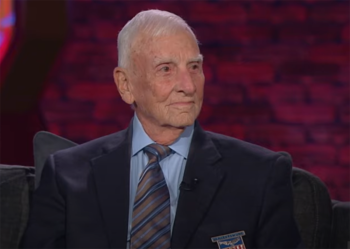As Col. Carlyle “Smitty” Harris flew over the targeted bridge on a bombing run in Northern Vietnam in 1965, anti-aircraft fire blew out the single engine to his F-105 Thunderchief. He ejected deep inside enemy territory.
“I was the first plane to go in on the target, so every gunner on the ground was looking at me,” he says on a Mike Huckabee video.
Smitty’s faith helped him survive eight years of imprisonment and torture in North Vietnam’s infamous “Hanoi Hilton” until he and 590 other prisoners of war were finally repatriated to the United States. Meanwhile, his wife, Louise, held on to her faith as she waited for his return.
“Mrs. Harris, Smitty has been shot down and his plane was seen in a ball of fire and there was no chute sighted,” they informed her, according to CBN.
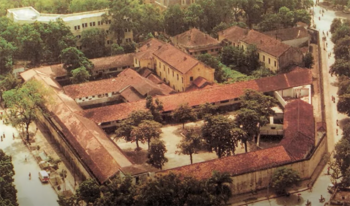
“Of course, I worried. I cried — and the children.” Louise says. “We’d pray every night on our knees for daddy.”
Smitty joined the Air Force in 1951 with the dream of serving in the Korean War, but it ended too soon. When the Vietnam War erupted in 1964, he hoped to be deployed in the conflict, helping to defeat the spread of communism.
“I thought it was important as a support of our country,” Smitty says. “I really wanted to be a part of it.”
Smitty led the bombing run against a large bridge near the City of Than Hoa.
“The F-105 is a single engine airplane, very very capable,” Smitty says. “When that engine is hit and goes out, you know you’re not going very far.”
His fellow pilots didn’t see his parachute, so they assumed he died when the plane hit the ground and exploded.

But Smitty had, in fact, ejected safely. Out of the pandemonium of the burning aircraft he suddenly found himself floating peacefully through the air riding his parachute down.
He surveyed the ground around him to see if he could escape on foot through some trees or rough terrain that would help him elude captors. Unfortunately, he was over a village with only rice paddies all around as far as the eye could see in every direction.
Smitty was captured and transferred to the Hoa Lo Prison, where other American POWs were held for years after the Vietnam War ended. The inmates facetiously dubbed the torture prison the Hanoi Hilton.
There, Americans were systematically tortured — not to extract valuable military secrets — but only to demoralize them. They were subjected to long periods of solitary confinement, waterboarding, irons, beatings and “strappado” (suspending prisoners in the air by ropes tied to their hands behind their backs, which frequently provoked dislocated shoulders).
To counteract the devastating torture campaign, Smitty recalled and taught to his fellow prisoners a secret code system to communicate. It was called tap code and had been developed by American POWs in German camps. Smitty had learned it from an instructor.
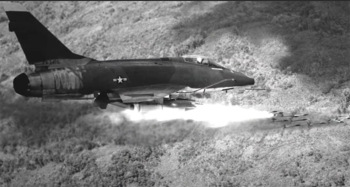
John McCain was a fellow prisoner with Smitty.
“If one of our members came back from a torture session, as soon as his door was slammed shut and the guard was out of range, the first thing you would hear on the wall was GBU (which meant God bless you),” he says. “We really wanted God to bless him and wanted to communicate to him that we were with him and that he would recover and be a member of our unit again.”
Through torture, the North Vietnamese attempted to get the POWs to break down and make televised statements criticizing America and praising the North Vietnamese.
On one such televised statement in 1966, Navy pilot Jeremiah Denton blinked his eyes in Morse code “T-O-R-T-U-R-E.” Two months later, 52 American prisoners were forced to march around Hanoi to be humiliated in front of the North Vietnamese. The public rioted and authorities lost control of the march. As a result, the prisoners were severely beaten.
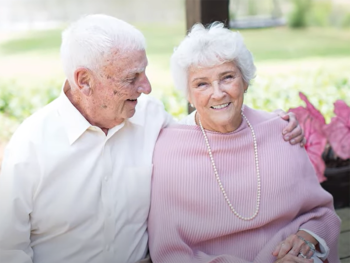 The United States ended its involvement in 1975 — and Vietnam, Cambodia and Laos all fell to communism. After presidential assistant for national security affairs Henry Kissinger signed a ceasefire with North Vietnam, most POWs were released.
The United States ended its involvement in 1975 — and Vietnam, Cambodia and Laos all fell to communism. After presidential assistant for national security affairs Henry Kissinger signed a ceasefire with North Vietnam, most POWs were released.
How did Smitty endure 2,871 days of confinement?
“You don’t have a choice,” he says. “Training was part of it. We knew, deep down, you had to believe in something bigger than yourself and we believed that was God. And we prayed.”
Meanwhile, his wife, Louise, had her own tortures to endure. She was initially informed her husband was mostly dead in the fireball explosion. But five months later, the North Vietnamese captors allowed him to write her a letter assuring her he was alive.
“It was like manna from heaven,” Louise says.
She began to send packages to him. Only two got through. And she and the three children cried out to God.
“When I would pray every night, ‘Take care of him, and that if he was hurting to help soothe him,’ it made me feel a connection to him,” Louise recalls. “I always believed he’d come home. I knew in my heart that Smitty was alive, and if he could endure his challenges, I could as well.”
The marriages of many POWs didn’t survive. The torture left soldiers with PTSD that played out adversely in their marriages — not to mention the effects of the prolonged separation.
But Smitty’s and Louise’s marriage survived. “When we said our wedding vows, we believed in them. Both of us had a strong faith through our whole lives. Separation, except forced, was not in the equation. We were one.”
Years later, his kids and grandkids asked him to write about his experiences, which were gathered into the book Tap Code.
“I can recall most of the bad times when I was in the hands of my North Vietnamese captors, but I don’t dwell on those times,” Smitty told Publishers Weekly. “The most 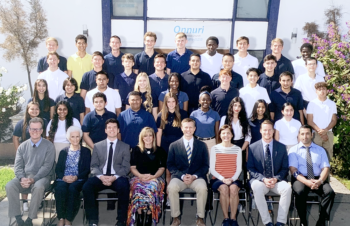 important benefit for me was a renewed and strengthened faith in God. I knew that I would never be alone under any circumstances in my life.”
important benefit for me was a renewed and strengthened faith in God. I knew that I would never be alone under any circumstances in my life.”
Danny O’Neill studies at Lighthouse Christian Academy in Santa Monica.

